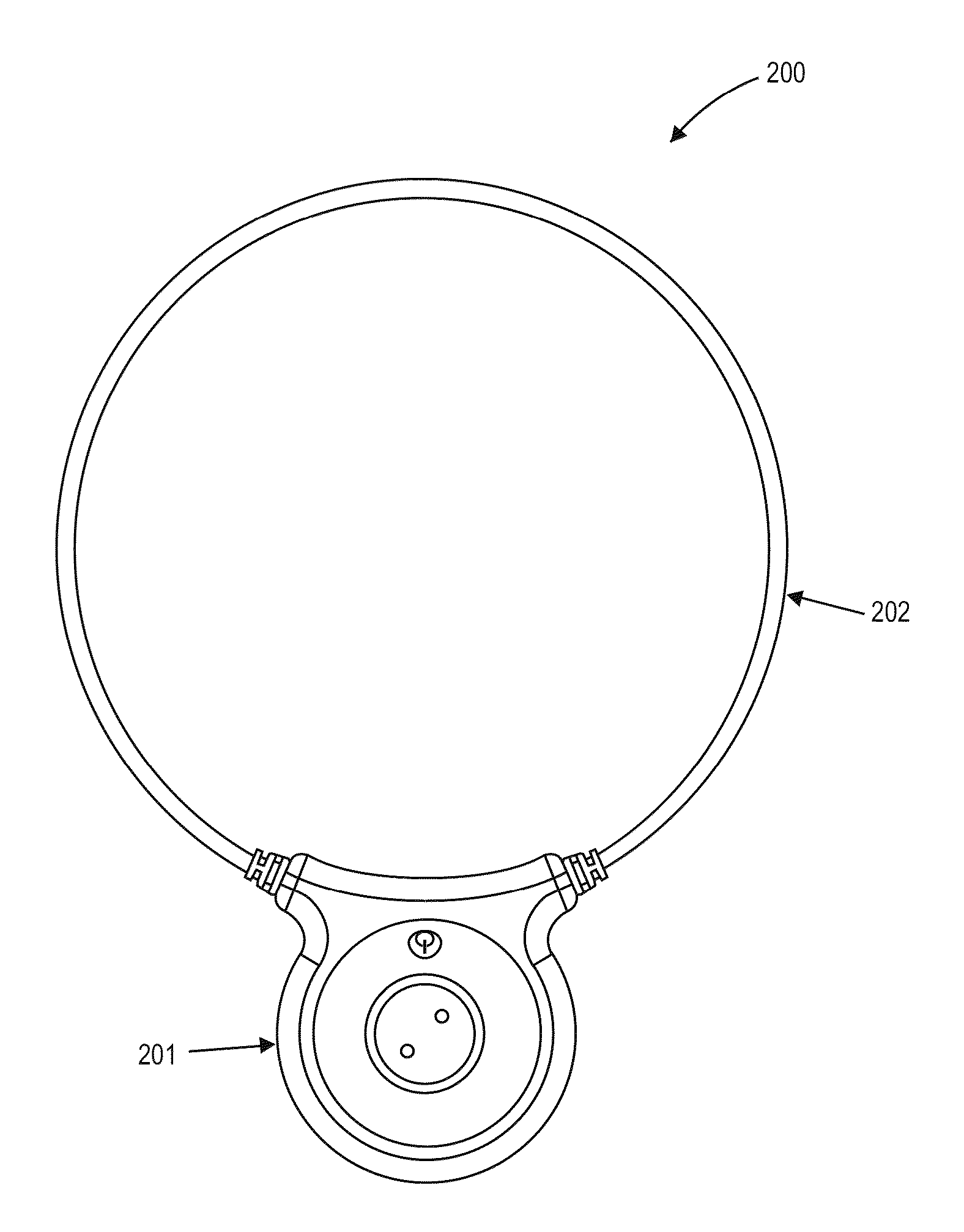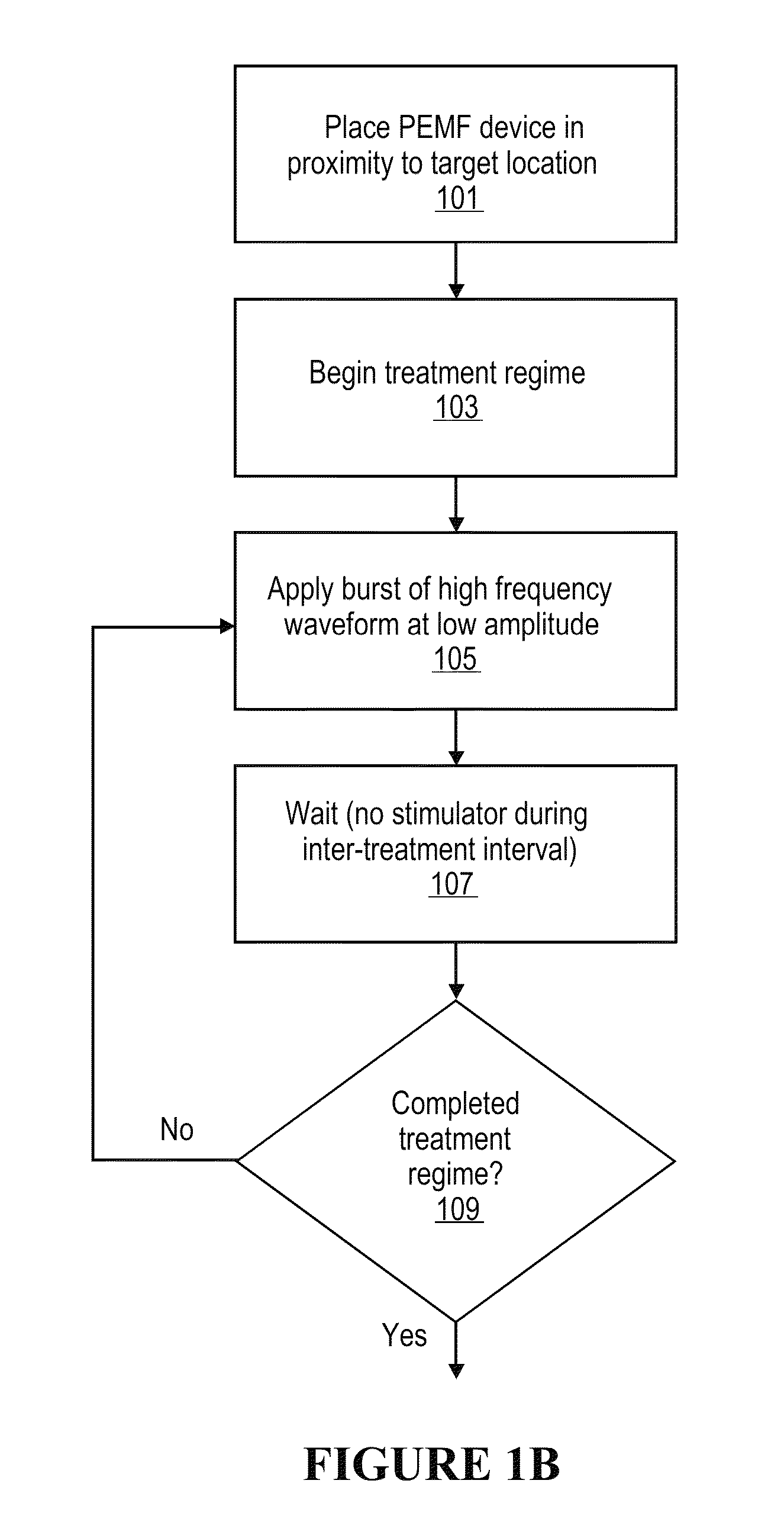Method and apparatus for electromagnetic treatment of head, cerebral and neural injury in animals and humans
a head, cerebral and neural injury technology, applied in the field of electromagnetic treatment devices, systems and methods, can solve the problems of traumatic brain injury creating long-term or even permanent cognitive, motor and sensory disabilities, and traumatic brain injury is also a significant cause of death in civilians, and achieves the effects of enhancing angiogenesis, enhancing nervous tissue regeneration, and increasing growth factor in the target region
- Summary
- Abstract
- Description
- Claims
- Application Information
AI Technical Summary
Benefits of technology
Problems solved by technology
Method used
Image
Examples
example 7
[0185]In one study, a group of rats received neural transplants of dissociated embryonic midbrain neurons and were treated twice a day with PEMF or null signals for 1 week. As shown in FIG. 11, OX-42 labeled activated microglia form a “cuff” surrounding the transplant. Alkaline phosphatase-labeled blood vessels were stained in purple. Results of the microglial staining, shown in FIG. 11, demonstrate that microglial activation was less intense in the PEMF group. This study showed that PEMF may attenuate inflammation in response to transplantation. However, the apparent decrease in microglia may be transitory and that microglial activity may actually be increased / accelerated.
example 8
[0186]In this example, rats were subject to penetrating injuries and exposed to PEMF signals according to embodiments described. Brain tissue was processed for OX-42 IHC at specified times after injury to identify activated microglia. As shown in FIG. 12, results demonstrate that the pattern of OX-42 staining in rats that received penetrating injuries was localized to the site of the trauma. Most importantly, staining intensity appears higher with PEMF treatment at 2 and 5 days after injury, indicating activation of microglial cells was accelerated.
example 9
[0187]As shown in FIG. 13, neuronal cultures were treated with PEMF signals for 6 days before challenge by (1) reduced serum 1% or (2) 5 μM quisqualic acid, a non-NMDA glutamate receptor agonist. Dopaminergic neurons were identified by tyrosine hydroxylase immunocytochemistry and quantified at 8 days. The bars shown in FIG. 13 indicate mean neuronal numbers (+ / −SEM) in triplicate cultures. Asterisk denotes groups with significant differences from the null group (P<0.05). Results indicate that PEMF signals according to embodiments describe provide neuroprotective treatment to prevent neural death.
PUM
 Login to View More
Login to View More Abstract
Description
Claims
Application Information
 Login to View More
Login to View More - R&D
- Intellectual Property
- Life Sciences
- Materials
- Tech Scout
- Unparalleled Data Quality
- Higher Quality Content
- 60% Fewer Hallucinations
Browse by: Latest US Patents, China's latest patents, Technical Efficacy Thesaurus, Application Domain, Technology Topic, Popular Technical Reports.
© 2025 PatSnap. All rights reserved.Legal|Privacy policy|Modern Slavery Act Transparency Statement|Sitemap|About US| Contact US: help@patsnap.com



